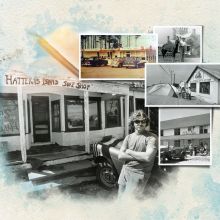
How do you mark time? In birthdays? In the growth of your children or grandchildren? By memories of past places and events?
One way to capture the passing of the years is through buildings and businesses. If you’ve lived on the Outer Banks for a long time – or if you’ve visited here year after year – you’re able to say things like, “Yea, that spot right there was where the Galleon Esplanade stood” or “Man, there’ll never be a classic hotel like the Carolinian again” or “I can remember countless nights at Sound Side listening to amazing music when you knew every single person in there.”
Time marches by, right? And so many of the old familiar places we used to navigate by are no longer around. There are way too many of the businesses that are gone to even begin to mention here. But there is a collection of die-hards, of businesses that have existed for decades, sometimes through a few generations of the same family running them, that are now our guideposts for a trip backward in Outer Banks time. Whether you were here in the 1950s or now, you’ll know these legacy spots, and they’re worthy of high praise and recognition for their placeholder status in our islands’ history.
But first, a note: My main resource for this time travel is the national Insiders’ Guides series, for which I was the publisher, that included our flagship book to the Outer Banks. Our first edition was in 1979, and we updated every year past that until we sold the series in 1998. Since we wrote up every business that was in a shop, eat, stay or play category, the series is a wonderful source for what was there and what has changed. That said, I’m bound to leave someone out of this article who should have been included. If only I had limitless pages to capture this history! Alas… And, of course there are many attractions, such as the Wright Brothers National Memorial, Jockey’s Ridge State Park, The Elizabethan Gardens, The Lost Colony, all the lighthouses and the Ocracoke Pony Pens that predate the timeframe I’m using to highlight these businesses (1979 till today) that are mainstays of our local culture.
But I want to bring light to the businesses and people who have successfully navigated the seasons, the storms, the recessions and the pandemic and are still here to greet customers and hold their turf. They’re our bedrocks and links to an Outer Banks of the past.
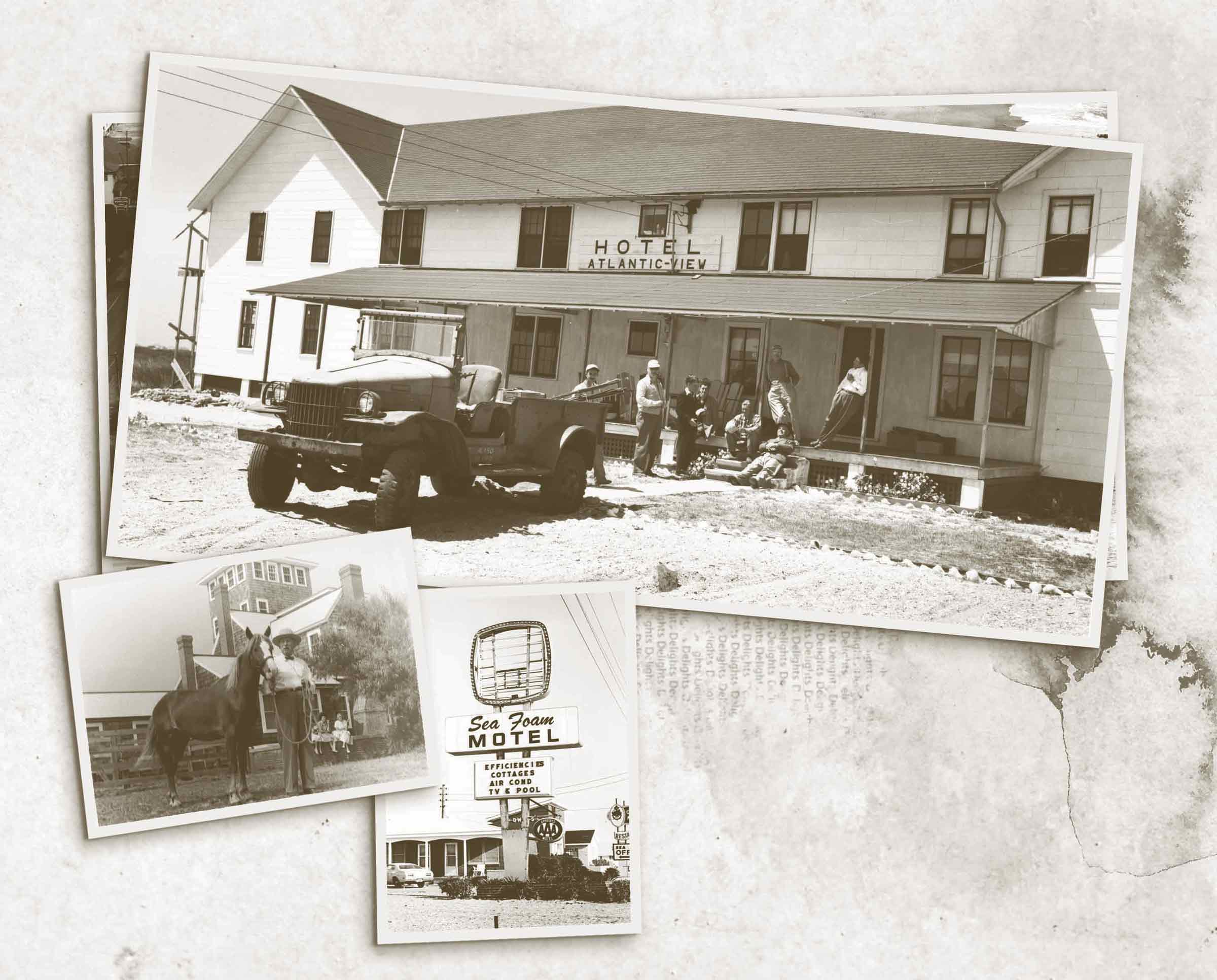
Legendary Motels and Campgrounds
Let’s start with places to stay. The first observation I made when doing the research was how most of our campgrounds have moved to Hatteras or Ocracoke islands. In 1979, there were six on the northern islands and nine more on Hatteras and Ocracoke – 15 in all. Today, there are 17 on just Hatteras and Ocracoke and only three on the northern banks (not including the RV parks). I think the number of southern ones is one of the reasons those two islands feel more like the Outer Banks of old since you’ve got to have open, undeveloped land to have a campground. And, due to their preponderance, we can probably assume that camping enthusiasts appreciate the slower pace of both Hatteras and Ocracoke islands. Notable long-termers are the popular Frisco Woods Campground that has been owned and run by the Barnett family since 1975; Cape Point Campground; Cape Pines from 1953; KOA Campground, which was originally called KOA Original Kampgrounds; North Woods Campground that’s been a favorite since 1974; Cape Woods Campground that was originally called Cape Woods Camper Park; Hatteras Sands Campground, originally called Hatteras Sands Camping Resort; and North Beach Campground that’s been welcoming campers since 1974 to their oceanfront property.
When we turn our attention to the hotels and motels, the first thing that must be said is that over the past decade, we’ve lost many of the iconic ones to make way for houses. But the older ones that remain are now, perhaps, even more appealing because they connect visitors to the Outer Banks that our parents or grandparents knew. And, luckily, several groups have made it their mission to buy and restore these nostalgic properties so that we don’t lose the essence of what made this area popular to begin with. Starting north, there were, of course, no hotels or motels in Corolla or Duck in the ’70s (and there are very few even now). But once you get to Kitty Hawk, you have the Buccaneer and Saltaire, also from the ’50s.
The Sea Ranch Resort that you see today started out with two oceanfront buildings in 1963, but the original Sea Ranch was located way up the beach in what was then unincorporated Dare County but today is at the junction of Kitty Hawk and Southern Shores. Alice Sykes, the owner, built it in the 1950s but moved to the current site after the Ash Wednesday Storm in 1962. The resort included the first pool in Dare County!
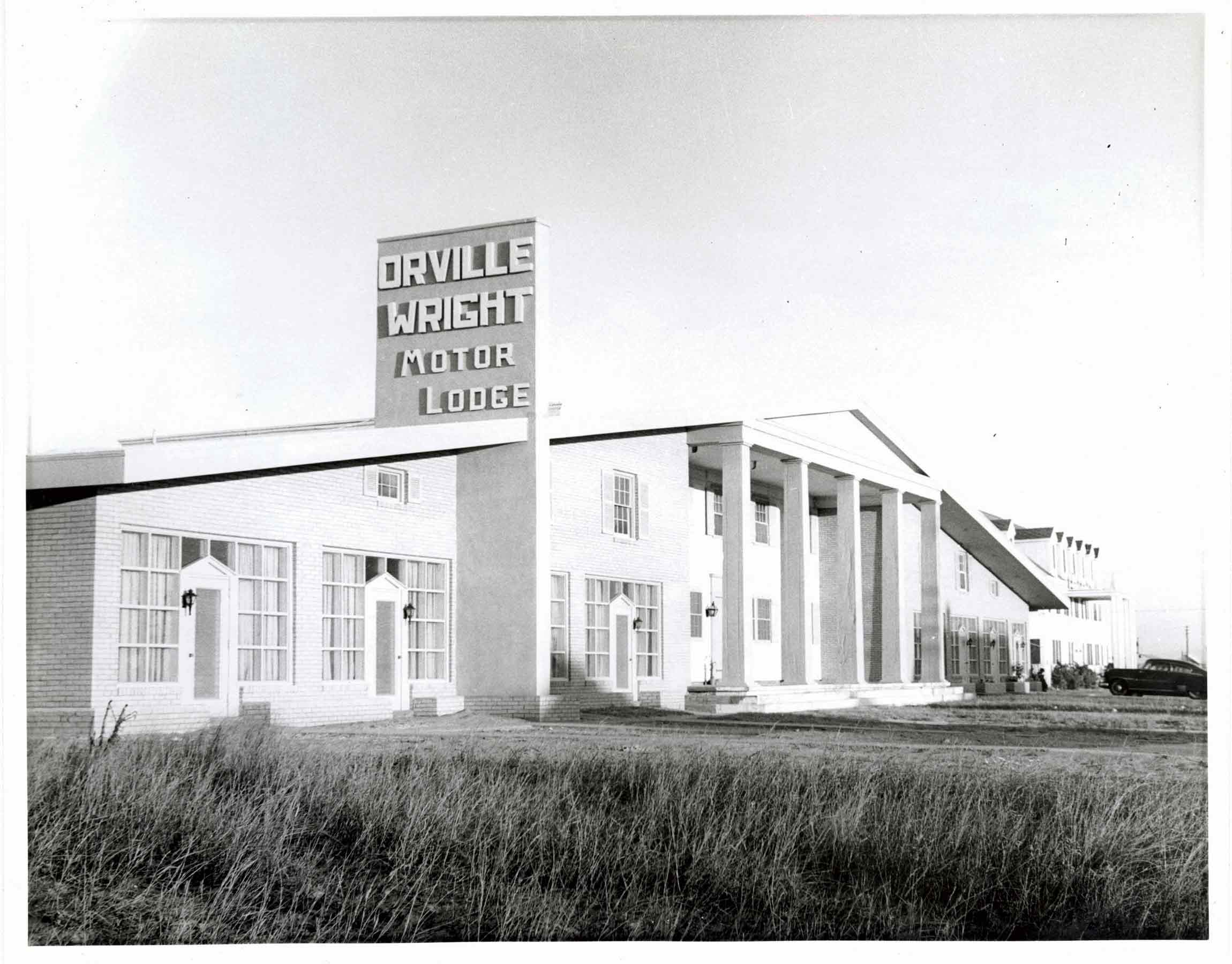
Photo: Today’s Days Inn Oceanfront Wright Brothers was once the Orville Wright Motor Lodge. - Aycock Brown Papers, OBHC
A little bit farther south on the beach road you find The Wilbur and Orville Wright Lodge in Kill Devil Hills, which also has an interesting history. Thomas and Annie Baum opened the doors to the Wilbur Wright Hotel on July 1, 1939. A few years later, their daughter, Diane Baum St. Clair (who was, on her own, quite the character – a NYC model, graduate of Yale University and, at the time of her death, a benefactress to Outer Banks community projects) built the hotel we see today and named it the Orville Wright Motor Lodge. A huge waterspout completely destroyed her parents’ hotel in 1978. Diane renamed her remaining property the Wilbur and Orville Wright Lodge. Now the name has changed once again to The Days Inn Oceanfront Wright Brothers, but the historic Southern hospitality has lasted all these years.
Another interesting hotel is the Cavalier, which opened on July 7, 1950. The owners, Dorothy and Roy Wescott, Sr., had intended to open it on a celebratory July 4th, but the building inspector was out of town for the holiday. Before he came back on the 7th, a honeymooning couple arrived and ended up having to pitch a tent in the grassy area at the center of the property.
Other Kill Devil Hills properties that have been welcoming guests for decades include the Mariner Motel, the Outer Banks Motor Lodge (early 1960s), The Cypress House, which started out in the 1940s as a fishing and hunting lodge, and the 1962 John Yancey Oceanfront Inn, which started out being called the John Yancey Motor Hotel.
Coming into Nags Head, the oceanfront Colonial Inn opened its doors in 1947 and was a popular spot right next to the Nags Head Fishing Pier that welcomed anglers that same year. Between Colonial and our next historic property, the First Colony, we’ve unfortunately lost many well-loved cottage courts and motels such as the Sea Spray, the Nags Header, London Inn and Sun Luck Cottages.
The huge stretch of land known as the Epstein Tract and made up of 380 acres contained only sparse houses here and there in 1980 and separated this northern part of Nags Head development from the more southern area of the town where you find the Sand Spur today. The Ammons Corp. out of Raleigh purchased the acreage in 1984 and started building out the Village at Nags Head. Interestingly, the developers decided to put big curves into what was the pencil-straight beach road in this section, allowing more houses to be built oceanside and oceanfront.
In this area now is the oldest operating hotel on the Outer Banks known as the First Colony Inn. The building is the same, but in August of 1988 the location moved from oceanfront, basically in front of Austin’s Seafood, to its current location. This property was constructed in 1932 and is known for its shingle-style architecture with large porches that captured the almost-constant wind to combat the summer heat. When it was moved down the beach road, it was cut into three sections and rejoined on its home site.
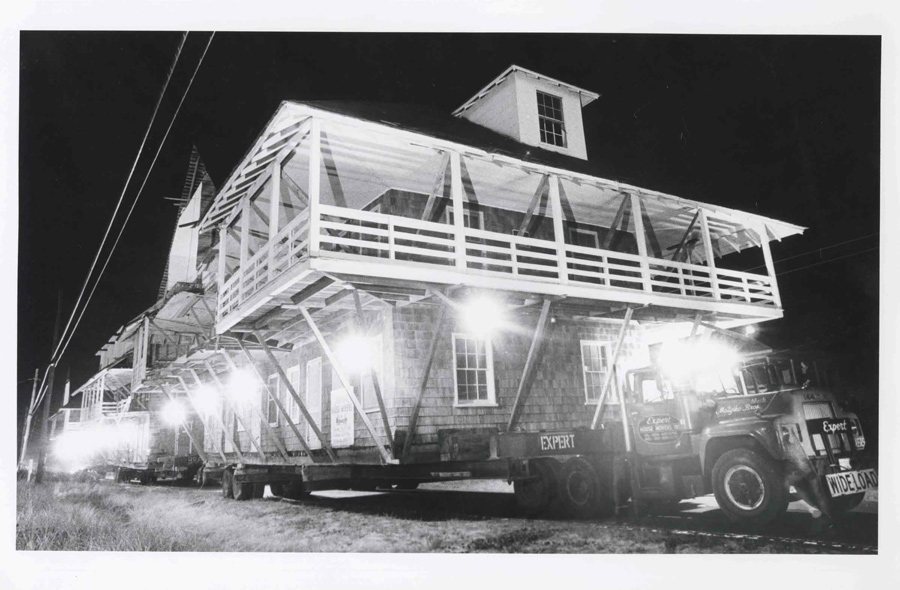
Photo: In 1988 the c. 1932 First Colony Inn was moved several miles to a new location in Nags Head. - Drew C Wilson Photographs, OBHC
Next is the Sand Spur Motel and Cottages that was built in 1959, the Blue Heron, built in 1965, and the Tar Heel Motel that’s been recently upgraded.
Also nearby is the Sea Foam Motel, which was built in 1948 and still has its original paneling, bathroom fixtures and the iconic sign. This place is beloved by families who have come summer after summer, generation after generation.
Bringing up the southern end is the Dolphin Oceanfront Motel, which has been welcoming guests for generations.
When we hop across the bridge to Hatteras Island, we enter a part of the area that harkens back to the Outer Banks of older times. Sure, there’s plenty of new development. But we find more historic motels still operating on this southern island than anywhere else. I think these older properties keep us tethered to a simpler time – Hatteras Island time – that helps your shoulders drop and your mind relax as soon as you cross over that soaring bridge. Most of these historic properties are clustered in Buxton and Hatteras village, but there are a few notable ones on the northern end.
The Sea Sound Motel in Rodanthe and the Avon Motel in Avon have both been in operation since the mid-1950s. They’ve been improved upon, of course, but you still experience that motor court mood.
Buxton is home to three older properties. Cape Hatteras Motel, which was initially called Cape Hatteras Court, was built in the 1940s. It was under the ownership of Dave Dawson from 1971 until recently, and like most other properties on this island, has had to be repaired and restored many times due to hurricanes. But Hatteras Islanders are as tenacious as people come! Next is Cape Pines Motel, which was built in 1953 and is still a popular spot. Then, the Outer Banks Motel is an oceanfront property that opened its doors in 1955. The matriarch, Carol Dillon, who is in her 90s, is still regularly on the property taking care of business. And, man, can she tell you a tale or two.
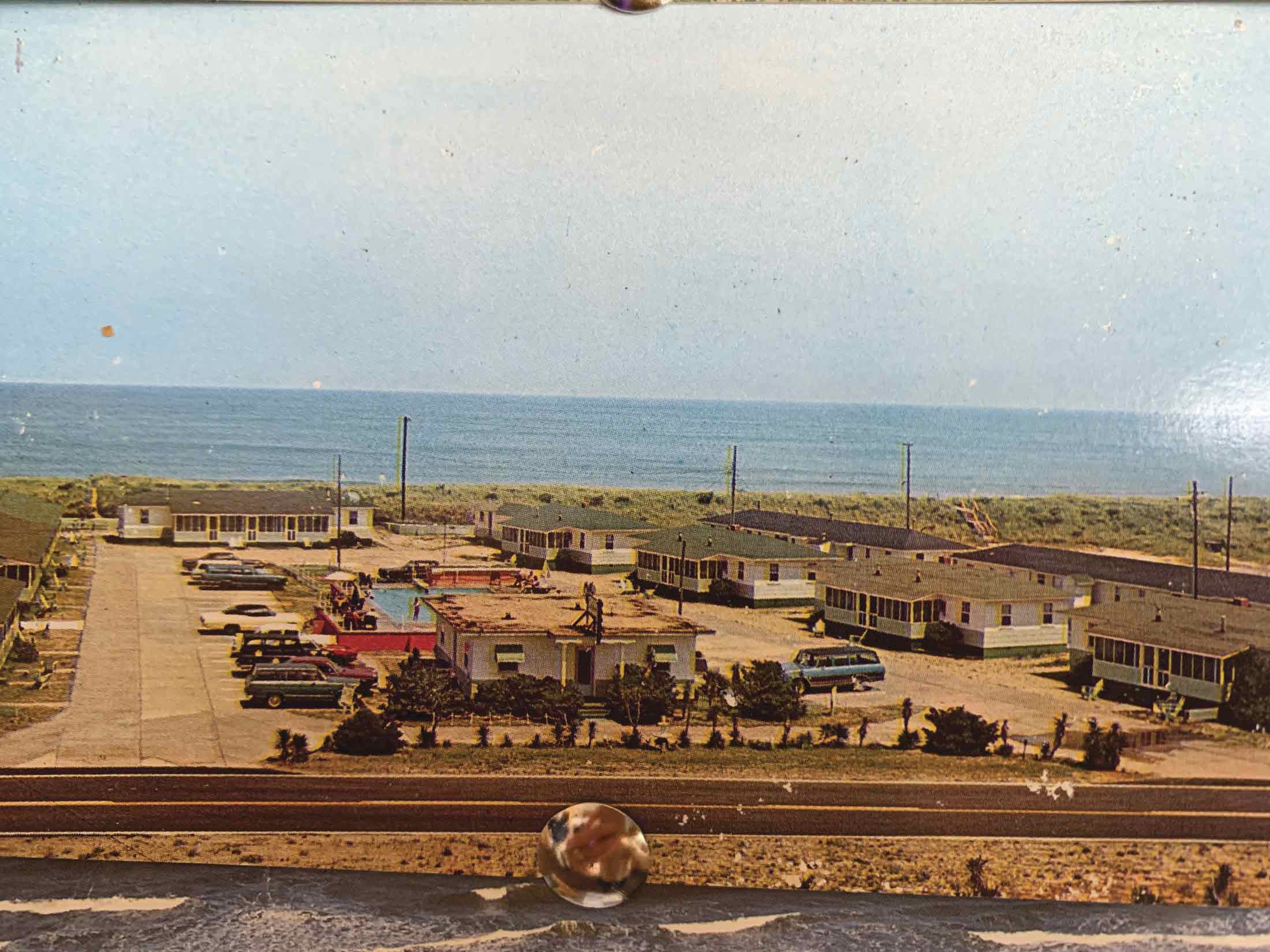
Photo: Cape Hatteras Court, now known as Cape Hatteras Motel in Buxton, dates back to the 1940s. - Cape Hatteras Motel
Down in Hatteras village, you can still enjoy staying at the restored Atlantic Inn, which started as the Atlantic View Hotel in 1928! The name changed to the Seaside Inn, then to the current Atlantic Inn when new owners bought it in 2020. It’s a venerable old building that exudes Hatteras charm in every corner. The Lighthouse View is another hotel that has been serving guests since 1952.
Two other village properties still in operation are the Sea Gull Motel, built in 1955, and Hatteras Harbor Apartments, which started out as the Hatteras Harbor Motel. The Sea Gull was badly damaged in Hurricane Isabel in 2003 (as were so many other properties), and had to complete quite a bit of reconstruction before they could reopen. During the storm, the second story of one of the buildings actually tore off and floated ⅛-mile down the road.
Now let’s go to Ocracoke Island. Here, too, that lovely, slow-down energy permeates through the number of hotels that have kept their foothold for decades. One of the most picturesque is Berkley Manor, a storied structure with some fantastic stories written in its walls. Sam Jones, a wealthy businessman, built it in the early 1950s in part to host extravagant parties. Often in attendance was his horse, Ikey D, gathered with other guests around the piano as if to add intermittent percussive neighs. He also built the Berkley Castle, known today as The Castle and also open to guests.
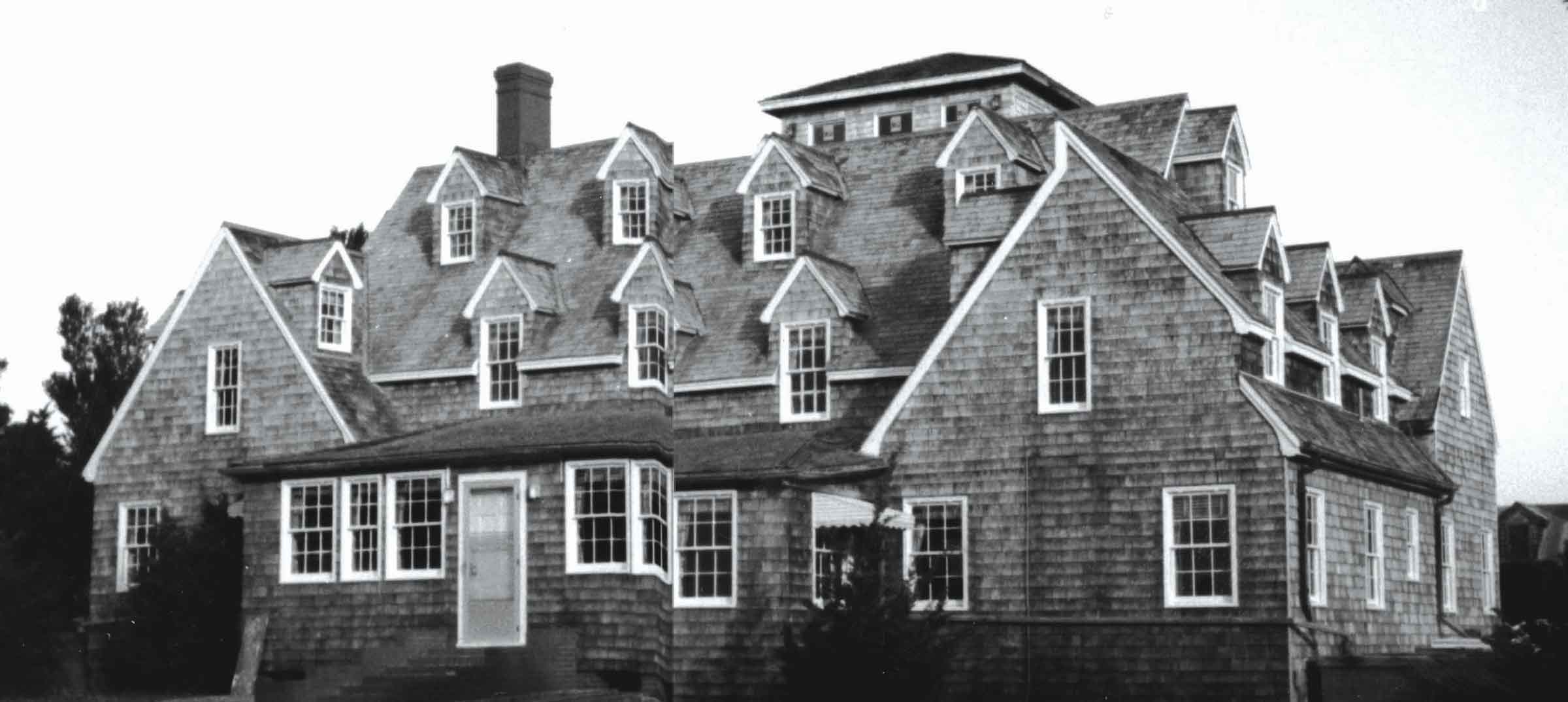
Photo: Berkley Castle, built in the 1950s by Sam Jones, is today an inn known as The Castle. - Castle Bed & Breakfast
Coming into its 86th year, Blackbeard’s Lodge started out as the Wahab Village Hotel, and with its movie theater, skating rink, dance floor and a kitchen that served family-style meals, you can imagine what a center of entertainment it was for islanders.
Other properties with long local roots include Pony Island Inn (1958), the Harborside Motel (1965), Bluff Shoal Motel (1966) and the Wagon Wheel Cottages that started out as part of the Navy base that was here in the 1950s.
Legendary Recreation
Golf is now a very popular activity on the Outer Banks with nine area courses to choose from (yes, some in nearby Currituck County). But the two oldest, still-operating courses opened their greens in the 1960s: Sea Scape Golf Course, designed by Art Wall, in 1968 and Duck Woods, designed by Ellis Maples, in 1969.
Fishing has always been one of the biggest recreational activities around here, and the number of remaining piers speaks to that draw for both locals and tourists. Luckily, even though most of these piers have been battered by many storms and hurricanes, they’ve been repaired and adapted to keep up with the anglers’ and pleasure seekers’ demands. Kitty Hawk Pier is the northernmost and was built in 1953, and its neighbor a bit to the south that’s still welcoming anglers is Avalon Pier, which opened in 1958. Down the beach is Nags Head Fishing Pier. It opened in 1947 and originally also offered the attached Ocean Shores Recreation Center with a skating rink.
A few more miles down the road is Jennette’s Pier, the Outer Banks’ first pier. Reasonably, it, like the others, was a wooden pier and it, like the others, had to be rebuilt several times, in 1945 then again in 2011 after the pier had been destroyed by Hurricane Isabel. This time, the pier was built to stay as a formidable concrete structure. With its oceanfront events room, it’s a popular spot for weddings and other gatherings as well as for fishing and sightseeing.

Photo: The old wooden Jennette’s Pier - Roger P. Meekins Photographs, OBHC
In South Nags Head is the Outer Banks Fishing Pier. It was first built in 1959 then rebuilt after the Ash Wednesday Storm in 1962. Gary and Mary Oliver bought it in 1970 and ran it as only a pier until 2012 when the addition of Fishheads Bar and Grill pushed it into one of the most popular local gathering spots – how appealing is it to watch a full moon rise from a front-row seat over the water with a cool beer in your hand?
On Hatteras Island, the first pier you get to is the Rodanthe Pier, built in the later 1960s, then the Avon Fishing Pier, which was the first one built on Hatteras in 1963.
All anglers know that, while piers offer one type of fishing experience, there are other great options too. The 1970s saw the beginning of head boat fishing, and the very fact that the two boats that started the fishing option here – Crystal Dawn and Miss Oregon Inlet II – are still drawing crowds today proves the popularity. Both boats pull repeat guests year after year due to the appeal of the safety, accessibility for all ages, refreshments, helpful mates and entertaining captains.
Marinas offer yet another way to hook those fish, and in the cases of the offshore boats that operate out of these marinas, it’s often the game fish that are the prize. One of the oldest marinas is found on Hatteras Island and is the home to the Albatross Fleet and the well-respected Foster family. The original Albatross launched in 1937 and is still on the water, followed by Albatross II in 1948 and Albatross III in 1953. That’s a lot of fishing history right there!
Another storied marina on Hatteras is Oden’s Dock, which has been operated by four generations of the Oden family.
Oregon Inlet Fishing Center has been a hub for fishing since it opened in 1956. It was a stockholder- owned operation for most of its history until 2018. Fishing legends at the helm included local names such as Tillett, Baum, O’Neal, Mann, Cudworth, Davis, Stokes, Berry, Dowdy, Peele, Daniels, Gaskins, Etheridge, Payne, Austin and Midgett – a virtual who’s who of fishing royalty.
If we shift from the water to the air, one of the oldest and most visible legendary local businesses is Kitty Hawk Kites, founded in 1974 by John Harris and his then partner, Ralph Buxton, in the garage of the old Casino across from the Jockey’s Ridge sand dune. John has been a pioneer in hang gliding and was, in fact, the first person to hang glide off the side of Grandfather Mountain. He saw the potential of the prevailing winds and the elevated vantage point off the dune and built the largest hang gliding business in the country, having taught more than 450,000 students since the ‘70s.

Photo: The original Kitty Hawk Kites in Nags Head - courtesy Kitty Hawk Kites
And, finally, we have the storied Pioneer Theater in Manteo, which is the oldest remaining Outer Banks business of them all. Founded in 1918, generations of the Creef family operated this beloved theater until 2022, making it the oldest family-run theater in the country. With the new owners, five members of the Basnight and Hatchell families, the theater has been fully restored and now hosts music, movies, events, conferences and even weddings!
Legendary Restaurants
Most areas experience the frequent turnover of restaurants, and the Outer Banks is no exception. So it makes it that much more notable when you discover eateries that have held their own for many decades, marking them as local landmarks.
The building that houses the Jolly Roger Restaurant in Kill Devil Hills started out as a gas station/grocery store! It converted, and expanded, into the Jolly Roger in 1972 and has been going strong ever since. A nearby neighbor, Art’s Place, began in 1978 and another neighbor, John’s Drive In, has been serving long lines of diners since 1977.
Down the road in Nags Head are four more oldies that still draw faithful crowds. Owens’ Restaurant started in 1947 as a hot dog stand then expanded into the upscale spot it is today. (Rumor has it that the name will change this summer). Sam & Omie’s was started in 1937 by Sambo Tillett as a place to feed the super early rising anglers. Snow Bird’s (1954) and Dune Burger (1950s and originally called That’s A Burger) have been go-to burger spots for people wanting to grab a quick bite. These are all beach road establishments, I might point out, and that makes them even more nostalgic.
Over in Manteo, Darrell’s Restaurant has been a favorite since 1960. Unlike most other Manteo restaurants, they serve breakfast, lunch and dinner, and if you want to dine next to longtime locals, this is the place to be.
On Hatteras Island, you can visit The Froggy Dog in Avon, which began as a hot dog stand in 1970 then grew into the popular spot it is today. Down in Frisco is the Gingerbread House Bakery, established in 1975, where people swear they still get the best pizza and pastries on the island.
Ocracoke has two old-timers that are still going strong. The Pony Island Restaurant opened in 1959 and is the oldest one on the island. The long wait list on busy summer mornings is testament to how popular this place still is. The other venerated long-time restaurant is Howard’s Pub. Originally located across the street, the current pub was opened for business in April of 1979 by Ron Howard. The ever-busy bar/restaurant was basically an instant success, as it brought beer back to Ocracoke where it has been banned since a resolution adopted in 1937 by Hyde County Commissioners. The good times have been centered here ever since.
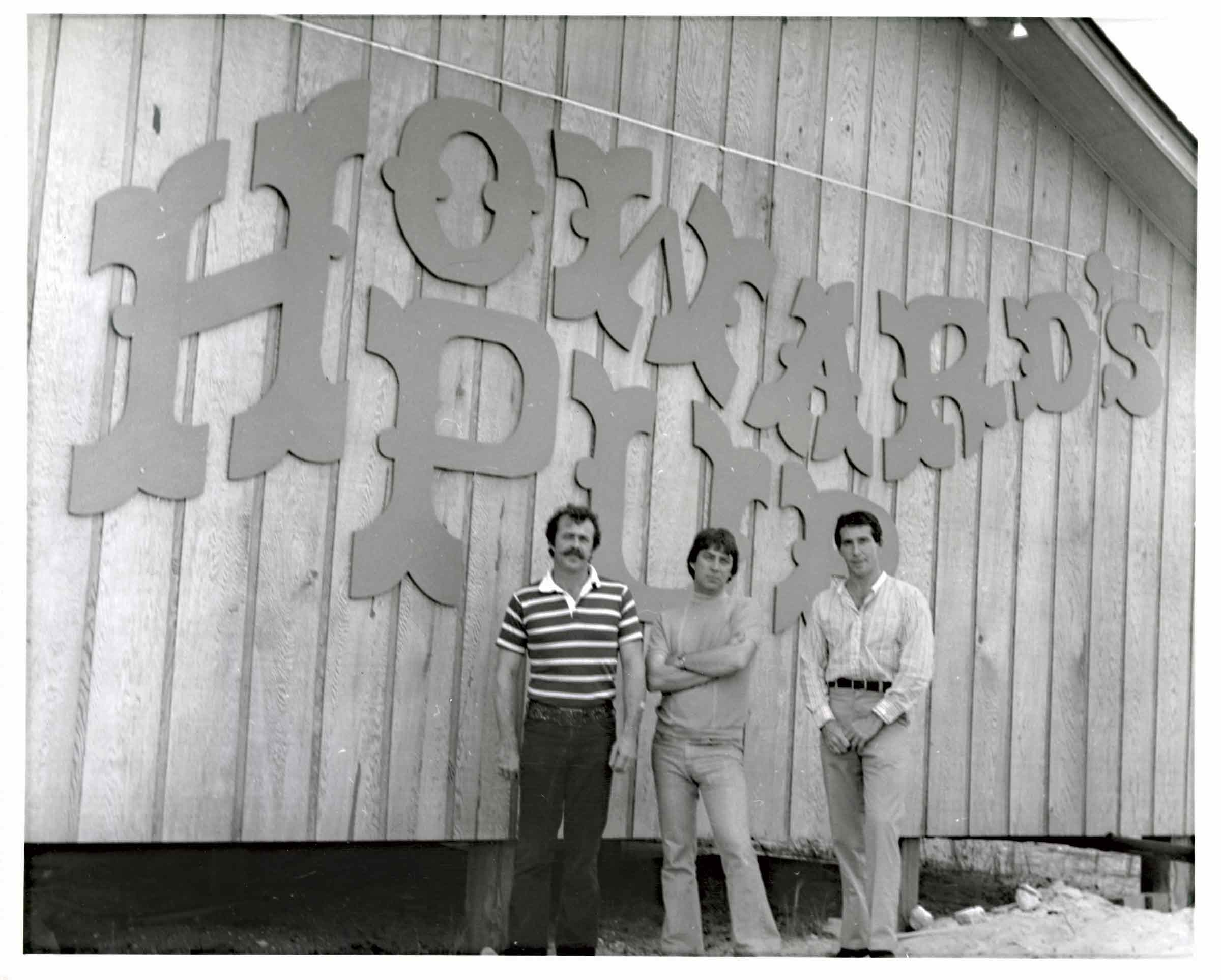
Photo: The early days of Howard’s Pub in Ocracoke - Aycock Brown Papers, OBHC
Legendary Shops
Wee Winks in Duck was one of the few businesses in town (well, it wasn’t officially a town until 2002) in the late ‘70s. It was, and still is, the epitome of a convenience store … with more.
Farther south in Nags Head, Seaside Art Gallery, established by the Smith family in 1961, was the first art gallery on the Outer Banks. Another well-loved gallery, Glenn Eure’s Ghost Fleet Gallery came on the scene in 1975 with proprietors Pat and Glenn Eure. Glenn actually built the building with the help of a friend. Austin’s Seafood was built in the early 1960s and has operated every season since in this same location.
The original Brew Thru came on the scene in 1977 with its drive-through concept of convenience for beer, wine and t-shirt purchasing. There are now five locations here. It might be best to use a quote from the source to talk about the next legendary business, which opened in 1974: “Nags Head Hammocks started out just the way you’d probably expect, with a beach-loving dude who was really into hand-making hammocks.” Their original location was in a converted cottage on the beach road.
The next three can definitely be considered the grandparents of all legendary shops. Gray’s Department Store, with owners Walter and Estelle Gray, opened on the beach road in 1948. It was called Gray’s Gift and Beach Accessories first, and it was chockfull of everything you’d need at the beach. Today there are four locations. A similar business, Cavalier Surf Shop, was one of the trailblazers for surfers when it opened in the early 1960s in the same building it still occupies. It’s still a headquarters for die-hard water sports lovers. A bit south is Cahoon’s Market and Cottages. They were built in the late 1940s with concrete on gravel, which might account for the fact that they’re still standing! Locals know that the grocery store, though small in size, is a treasure trove for fresh foods and good wines.
In Manteo, The Christmas Shop has been drawing so many faithful shoppers since 1967 that at one time it was considered an actual Outer Banks attraction. It’s still one of the most recognizable landmarks in the local shopping scene. Just down the road, RD Sawyer Motor Co. has been owned and operated by the namesake family for three generations since it opened in 1954.

Photo: Eddie Greene, founder of The Christmas Shop in Manteo - Drew C Wilson Collection, OBHC
As you might imagine, some of the oldtimer shops on Hatteras Island center around fishing. Red Drum Tackle Shop in Buxton started serving anglers in 1974, making it the oldest tackle shop on the island. Not too far behind, was the Pelican’s Roost, which opened in 1977 selling, as they described, gas, beer, bread and everything a fisherman needed. Tradewinds Tackle Shop also got its start in the late ‘70s.
Another sport Hatteras Island has been famous for is surfing, and the Hatteras Island Surf Shop that opened in 1971 was the first on the scene to sell boards. Their original shop was in a building that had once been the post office for Waves, NC. This small but lively shop was the supplier for surfers who were flocking to catch the ever-more-popular Hatteras waves. Natural Art Surf Shop joined the surf scene in 1977, transforming an old Whatsa Burger into a southern Hatteras Island surf mecca.
Lee Robinson General Store has been a store with most everything a local or tourists needs since 1948. It’s a literal Hatteras shopping tradition.
On Ocracoke, The Ocracoke Variety Store, now the island’s only grocery store, has been serving the community since 1972. It’s a gathering place as well as a very well-stocked store. The other long-established business on the island is the Village Craftsmen, which opened in a tipi (not kidding … and so wonderfully Ocracoke-ish quirky) in 1970. The owners, Philip and Julie Howard, sold their own handmade crafts for a few years, but soon the gift/art shop was so popular that they needed to add other artists’ inventory and move to an actual building to keep up with demand. And 54 years later, they’re a pilgrimage stop for local and visiting shoppers, and their daughter, Amy Howard, runs the shop now.
As I mentioned near the beginning of this article, there’s no doubt that I’ve left some legendary business out, and I apologize in advance. But it has been such great fun taking this step back in Outer Banks time, and I hope you feel the same. The next time you’re visiting one of these businesses, give them some kudos for their tenacity and forethought in operating an establishment that would stand the test of time … especially Outer Banks time.
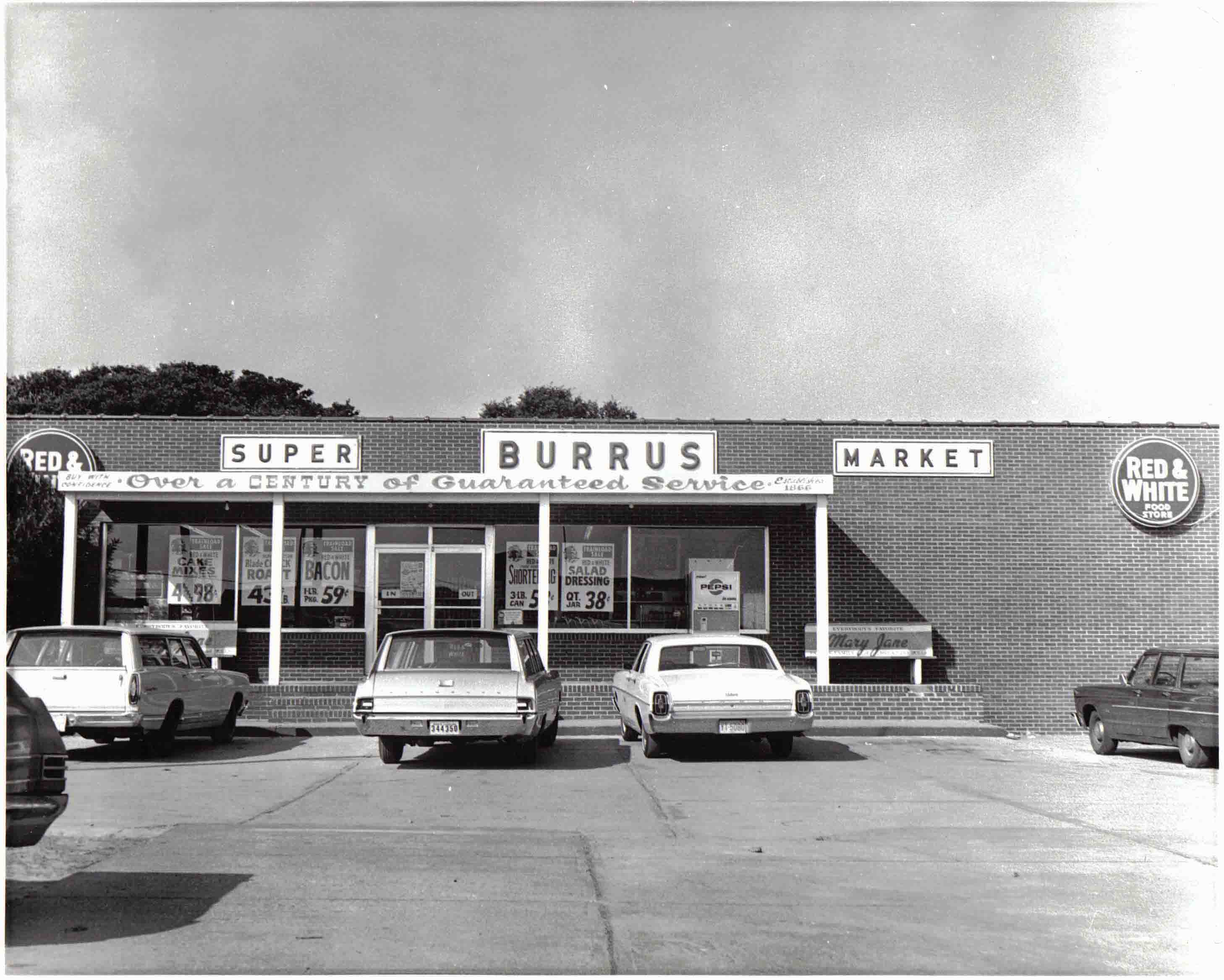
Photo: The Burrus Red and White of yesteryear
The Grand Legacy award goes to a business that’s been in operation since 1866 – that’s 158 years, folks!
What is now Village Market Red & White started out as Burrus Red & White at the same location where it’s found today.
Early days, the goods sold included salt pork, shot, pigs, cloth, tobacco by the pound and calf-skin boots. Today it’s a mainstay for all the groceries you may need and is still a gathering place for locals.
The photos in this story are courtesy of Outer Banks History Center (OBHC), State Archives of North Carolina.


 Beth Storie first came to the Outer Banks for the summer of 1976. She fell in love with the area and returned for good three years later. She and her husband published the national guidebook series, The Insiders' Guides, for more than 20 years and now are building OneBoat guides into another national brand. After spending time in many dozens of cities around the country, she absolutely believes that her hometown of Manteo is the best place on earth, especially when her two children, six cats and one dog are there too.
Beth Storie first came to the Outer Banks for the summer of 1976. She fell in love with the area and returned for good three years later. She and her husband published the national guidebook series, The Insiders' Guides, for more than 20 years and now are building OneBoat guides into another national brand. After spending time in many dozens of cities around the country, she absolutely believes that her hometown of Manteo is the best place on earth, especially when her two children, six cats and one dog are there too.




